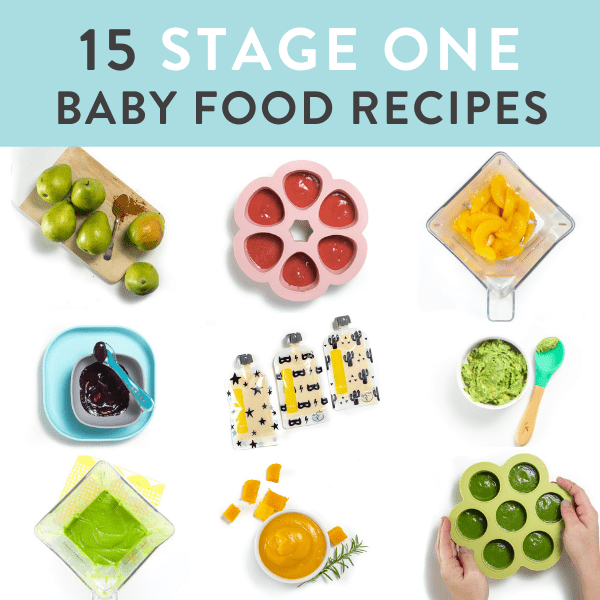
Baby Food Recipes: A Comprehensive Guide for Nourishing Your Little One
Introduction
Introducing solid foods to your baby is an exciting milestone in their development. It’s a time to explore new flavors, textures, and nutrients that will support their growth and well-being. However, navigating the world of baby food can be overwhelming, especially for first-time parents. This comprehensive guide will provide you with a wealth of baby food recipes, tips, and advice to help you create nutritious and delicious meals for your little one.
When to Start Solid Foods
The American Academy of Pediatrics (AAP) recommends introducing solid foods to babies around 4 to 6 months of age. By this time, most babies have developed the necessary motor skills to sit up, hold their heads steady, and coordinate sucking and swallowing. However, it’s important to note that every baby is different, so consult with your pediatrician to determine the best time to start solids for your child.
Signs of Readiness
Before introducing solid foods, observe your baby for signs of readiness, such as:
- Sitting up with support: Your baby should be able to sit up with minimal support to prevent choking.
- Head control: Your baby should be able to hold their head steady and upright.
- Tongue-thrust reflex: The tongue-thrust reflex, which pushes food out of the mouth, should have diminished.
- Interest in food: Your baby may show interest in food by reaching for it or watching you eat.
Starting with Purees
When starting solids, it’s best to begin with pureed foods. Purees are easy for babies to digest and swallow, and they provide a good introduction to new flavors and textures. Start with single-ingredient purees, such as:
- Fruits: Applesauce, banana, avocado, pear
- Vegetables: Sweet potato, carrot, peas, green beans
Gradually Introducing Textures
As your baby becomes more comfortable with purees, you can gradually introduce more textures. Start with mashed foods, such as mashed bananas or avocado, and then move on to soft, cooked foods, such as oatmeal or yogurt. Eventually, you can introduce finger foods, such as soft fruits and vegetables, to encourage self-feeding.
Variety and Nutrition
Offering a variety of foods is essential for ensuring that your baby receives all the nutrients they need. Include fruits, vegetables, whole grains, and lean protein in your baby’s diet. Avoid adding salt, sugar, or honey to baby food, as these can be harmful to their developing kidneys and digestive system.
Homemade vs. Store-Bought
Whether you choose to make your own baby food or purchase it from the store is a personal decision. Homemade baby food allows you to control the ingredients and ensure that your baby is getting the freshest and most nutritious meals possible. However, store-bought baby food can be convenient and time-saving. If you choose to purchase store-bought baby food, read the labels carefully to avoid products with added sugars, salts, or preservatives.
Baby Food Recipes
Here are a few simple and nutritious baby food recipes to get you started:
Apple and Banana Puree
- 1 medium apple, peeled and cored
- 1 ripe banana
Instructions:
- Steam the apple until soft.
- Mash the apple and banana together until smooth.
Sweet Potato and Carrot Puree
- 1 medium sweet potato, peeled and cubed
- 1 medium carrot, peeled and chopped
Instructions:
- Steam the sweet potato and carrot until soft.
- Mash the sweet potato and carrot together until smooth.
Oatmeal with Berries
- 1/4 cup rolled oats
- 1/2 cup water or milk
- 1/4 cup mashed berries (such as blueberries, strawberries, or raspberries)
Instructions:
- Cook the oats according to the package directions.
- Stir in the mashed berries.
Yogurt with Fruit
- 1/2 cup plain yogurt
- 1/4 cup mashed fruit (such as banana, apple, or pear)
Instructions:
- Combine the yogurt and mashed fruit in a bowl.
Tips for Feeding Your Baby
- Start with small amounts and gradually increase the quantity as your baby gets older.
- Offer food at regular intervals throughout the day.
- Be patient and encouraging. It may take several tries for your baby to accept new foods.
- Avoid force-feeding. If your baby is not interested in eating, try again later.
- Make mealtimes a positive experience. Sit with your baby and enjoy the time together.
Conclusion
Introducing solid foods to your baby is an exciting and rewarding experience. By following these tips and recipes, you can provide your little one with the nourishment they need to thrive. Remember to consult with your pediatrician for personalized advice and to address any concerns you may have. With a little patience and creativity, you can create delicious and nutritious meals that will support your baby’s growth and development.
